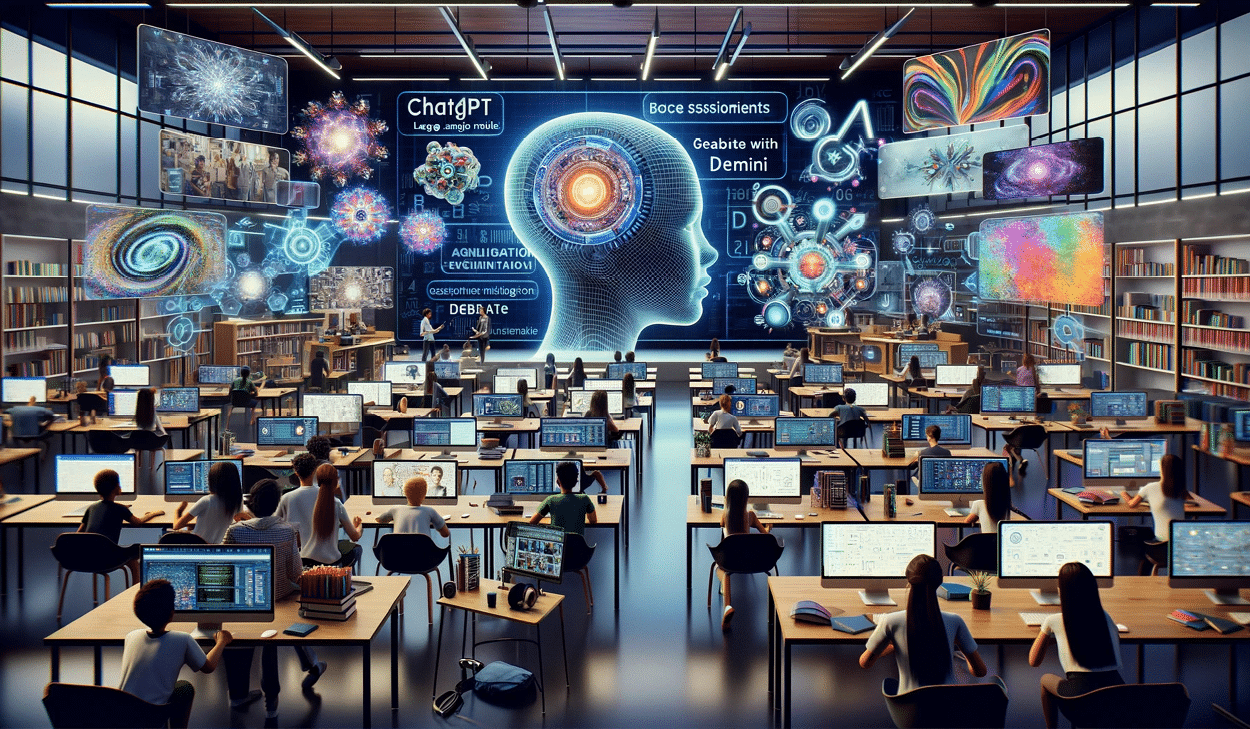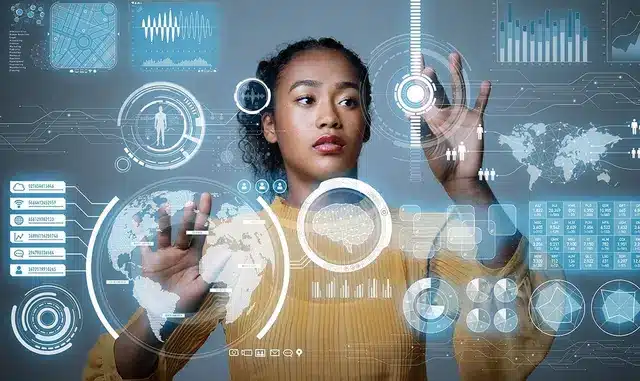The landscape of education has always been in flux, adapting to new needs, challenges, and opportunities. Over the past few decades, technological advancements have fundamentally reshaped how education is delivered, experienced, and consumed. From interactive whiteboards to immersive virtual reality experiences, educational technology has moved beyond just a supplement to teaching—it has become an essential pillar of modern education. As we move toward 2025, several key trends are emerging that will continue to influence and transform the world of education.
This article will explore the key trends in educational technology for 2025, discussing their potential impact, current developments, and future trajectories.
Key Takeaways
- AI and Machine Learning will provide personalized learning experiences, adapting lessons to individual students’ needs and enabling real-time assessments.
- Virtual and Augmented Reality will immerse students in dynamic learning environments, enhancing engagement and collaboration.
- Learning Analytics will allow for data-driven decision-making, improving student outcomes by identifying areas for improvement early on.
- Gamification and Game-Based Learning will increase student motivation and engagement by integrating fun, interactive elements into the curriculum.
- Microlearning offers convenient, bite-sized content that fits easily into students’ schedules, making learning more flexible and accessible.
- Blockchain will improve the security and transparency of academic credentials, enabling students to have a lifelong, digital record of their learning achievements.
- Digital Equity will remain a focus, ensuring that all students have access to the necessary technology and resources to succeed in a digital-first learning environment.
Artificial Intelligence (AI) and Machine Learning in Education
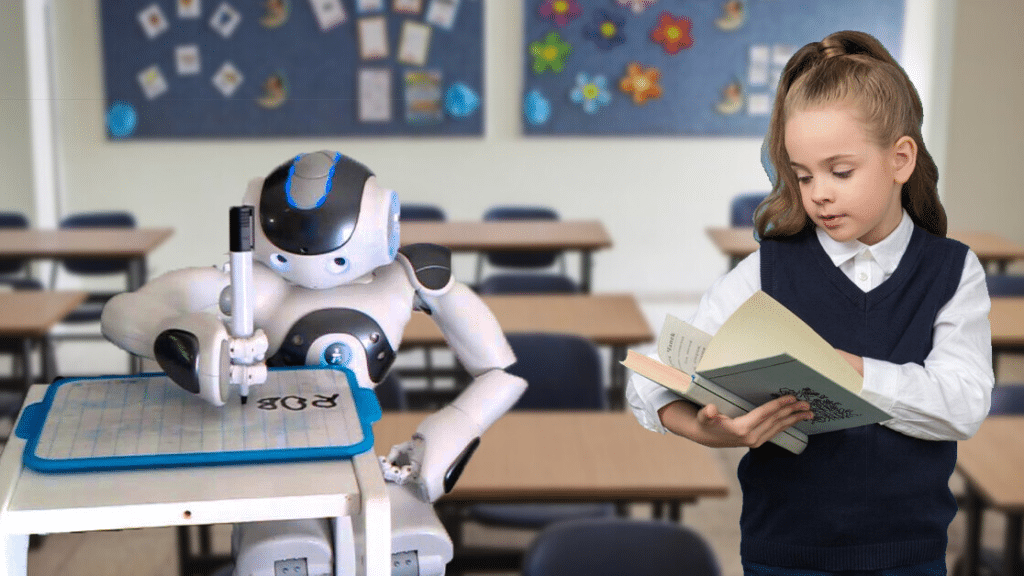
AI in Personalized Learning
Artificial Intelligence (AI) has already made its mark on various industries, and education is no exception. In 2025, AI will play a central role in personalizing learning experiences for students. Adaptive learning systems, powered by machine learning algorithms, will tailor lessons and resources based on individual learning needs, strengths, and weaknesses.
AI-driven systems can analyze a student’s past performance, assess their progress in real-time, and provide customized lessons that adjust in complexity as needed. This level of personalization ensures that each student receives the appropriate amount of challenge and support, which can lead to improved learning outcomes.
AI-Powered Assessments
AI is also revolutionizing the way students are assessed. Automated grading systems are already in place in some areas, but by 2025, AI-based assessment tools will be far more sophisticated. These tools will assess not only multiple-choice questions but also complex assignments, essays, and even creative work, offering detailed feedback and personalized recommendations for improvement.
Chatbots and Virtual Assistants
AI will also be integrated into the daily life of students and educators through chatbots and virtual assistants. These AI-powered assistants can answer questions, provide tutoring, and even help with administrative tasks. This reduces the cognitive load on educators and provides instant support for students, particularly in large, digitally driven classrooms.
Virtual and Augmented Reality (VR/AR)
Immersive Learning Experiences
Virtual Reality (VR) and Augmented Reality (AR) are expected to grow exponentially by 2025. These technologies can transport students to immersive environments that are otherwise inaccessible, such as ancient civilizations, outer space, or the depths of the ocean. Through VR and AR, students can experience firsthand the concepts they are learning about, whether it’s history, biology, or engineering.
For example, a student studying anatomy could use AR to explore a 3D model of the human body, manipulating organs and systems to understand how they function. Similarly, VR can provide medical students with realistic simulations of surgeries, giving them a hands-on experience before they operate on real patients.
Enhanced Collaboration and Engagement
In addition to individual learning, VR and AR will foster collaborative learning experiences. Virtual classrooms and field trips will allow students to work together in shared, interactive spaces. This not only enhances engagement but also prepares students for a future where collaboration with global peers will be the norm.
Learning Analytics and Data-Driven Education
Big Data and Predictive Analytics
The growing use of data analytics in education is another significant trend for 2025. Learning management systems (LMS) and other educational platforms will generate vast amounts of data, from student interactions to performance metrics. This data will be used to create insights into student progress and identify areas for improvement.
By harnessing predictive analytics, educators can identify at-risk students early on, offering timely interventions to help them succeed. This data-driven approach will also assist in curriculum development, as educators will be able to track which teaching methods are most effective in driving student success.
Real-Time Feedback
Data-driven tools will allow for real-time feedback, enabling students to understand how they are performing at any given moment. Teachers will be able to monitor student progress more effectively and provide personalized, data-backed advice.
Gamification and Game-Based Learning
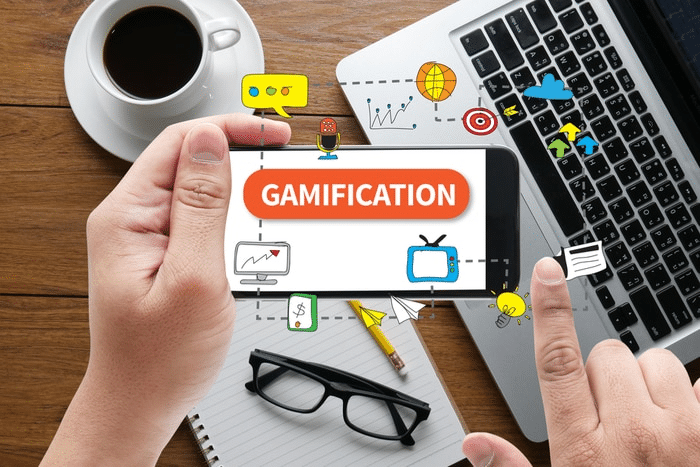
Gamified Learning Platforms
Gamification has been growing in popularity for a while, but by 2025, we will see a much more sophisticated integration of gaming principles into educational platforms. Students will engage with content through game-like features, including achievements, points, leaderboards, and badges. These elements make learning more interactive and engaging, motivating students to push through difficult topics and persevere in their studies.
Game-Based Learning Environments
In addition to gamification, game-based learning will allow students to learn by playing actual educational games designed to teach specific concepts or skills. Whether it’s learning how to solve complex math problems through puzzle games or understanding historical events by navigating through a role-playing game (RPG), these immersive experiences will engage students on a deeper level than traditional textbooks.
The Rise of Microlearning
Bite-Sized Learning Content
Microlearning, which refers to delivering content in small, focused segments, is rapidly gaining traction. By 2025, it is expected that more educational institutions and corporations will integrate microlearning into their curricula. This approach caters to the human brain’s preference for digestible chunks of information, making it easier for learners to absorb and retain knowledge.
Mobile and On-Demand Learning
Microlearning will be facilitated by mobile technologies, enabling students to access learning materials anytime, anywhere. Short-form videos, podcasts, infographics, and quizzes will become more prevalent as a way to offer on-demand learning experiences that fit into students’ busy schedules.
Blockchain Technology for Education
Secure Credentials and Digital Transcripts
Blockchain technology, known for its security and transparency, has the potential to revolutionize credentialing in education. By 2025, blockchain will be used to issue and verify diplomas, certificates, and transcripts, reducing the potential for fraud and ensuring that credentials are tamper-proof and easily accessible.
Decentralized Learning Records
With blockchain, students could have a decentralized, digital learning record that tracks their achievements across various platforms. This would allow learners to have a more comprehensive, accurate picture of their academic journey, which could be particularly useful for lifelong learners and professionals who want to showcase their skill development.
Digital Equity and Accessibility
Bridging the Digital Divide
As technology continues to evolve, ensuring that all students have access to these innovations becomes increasingly important. By 2025, educational technology will focus on bridging the digital divide by ensuring that students from all socioeconomic backgrounds have access to the devices and internet connectivity needed to participate in the digital classroom.
Assistive Technologies
The use of assistive technologies will also increase to support students with disabilities. From screen readers and voice recognition software to specialized learning tools for students with dyslexia, educational institutions will have a broader array of technologies to meet the needs of diverse learners.
1. Artificial Intelligence and Automation in Education
AI-Driven Personalization
The future of education will see the rise of AI technologies that are capable of deeply personalizing the learning experience. In 2025, AI will no longer be a futuristic concept but a crucial tool for educators and students alike. By leveraging machine learning algorithms, AI can analyze student performance in real-time, recommending individualized learning paths based on a student’s strengths and weaknesses.
This kind of personalized learning will allow students to progress at their own pace, whether they’re advancing faster through some subjects or needing extra help with others. AI’s ability to adjust dynamically to student performance ensures that learning is both efficient and targeted, leading to improved outcomes for diverse learners.
Automation of Routine Tasks
AI will also automate many of the routine tasks that currently burden educators, such as grading, administrative work, and content creation. By 2025, educators will spend less time on repetitive tasks and more time engaging with students directly. Automated grading systems will evolve to assess not only multiple-choice tests but also essays, projects, and even class participation, saving instructors hours of work each week.
Virtual Reality And Augmented Reality In The Classroom
Immersive Learning Environments
Virtual Reality (VR) and Augmented Reality (AR) are set to become mainstream in education by 2025, offering students interactive, hands-on learning experiences. These immersive technologies allow students to dive into complex subjects such as biology, history, and physics by interacting with 3D simulations and models.
For instance, VR can take students on virtual field trips to historical landmarks or allow them to explore the human circulatory system in 3D. Meanwhile, AR could enable students to overlay digital information on physical objects, offering real-time, interactive explanations of concepts that were once difficult to visualize.
Simulated Real-World Experiences
One of the most exciting possibilities of VR and AR is the creation of simulated real-world environments for learning purposes. In medical education, for example, VR simulations will allow students to perform surgeries or interact with patients in a safe, controlled environment. Similarly, VR can be used in engineering courses to simulate complex machinery and systems, offering students opportunities to practice skills without the risk of failure in real-world settings.
Advanced Learning Analytics for Better Insights
Predictive Analytics for Student Success
By 2025, learning analytics will be a fundamental tool for improving student outcomes. Data-driven insights will help educators understand how well students are learning in real-time, allowing them to make timely adjustments to teaching strategies. Learning management systems will collect massive amounts of data about student engagement, participation, and assessment results.
Predictive analytics will help identify patterns in student behavior, providing early alerts for students who may be at risk of falling behind. This proactive approach will ensure that educators can intervene before a student’s performance declines significantly, offering support or tailored resources that cater to individual needs.
Personalized Feedback and Learning Paths
Learning analytics will also enable personalized feedback. Instead of receiving generic feedback on assignments, students will benefit from more specific, actionable advice based on their unique learning journey. These insights will be delivered through automated platforms, where students can receive suggestions for improvement in real time, making learning more dynamic and responsive.
The Evolution of Gamification and Game-Based Learning
Engagement Through Game Mechanics
Gamification in education is more than just a passing trend—it’s a pedagogical strategy that taps into students’ natural love for play and competition. By 2025, gamified learning platforms will be the norm rather than the exception. Students will engage in learning through elements such as points, badges, and leaderboards, which will encourage them to stay motivated and challenge themselves.
In subjects like math, language arts, and even social studies, educators will design learning experiences that simulate game mechanics. For instance, in a history class, students might progress through levels based on their understanding of different time periods, earning points for completing challenges or quizzes correctly.
Game-Based Learning for Skill Development
Beyond gamification, game-based learning (GBL) is expected to grow significantly. In GBL, students learn by playing educational games that simulate real-world challenges or theoretical scenarios. These games are designed to develop critical thinking, problem-solving, and collaboration skills, while teaching core academic content.
For example, students in a business class could play a simulation game where they manage a company, making decisions on marketing, hiring, and product development. The game will reward students based on the success of their decisions, offering a practical application of business concepts.
The Rise of Microlearning and Just-In-Time Learning
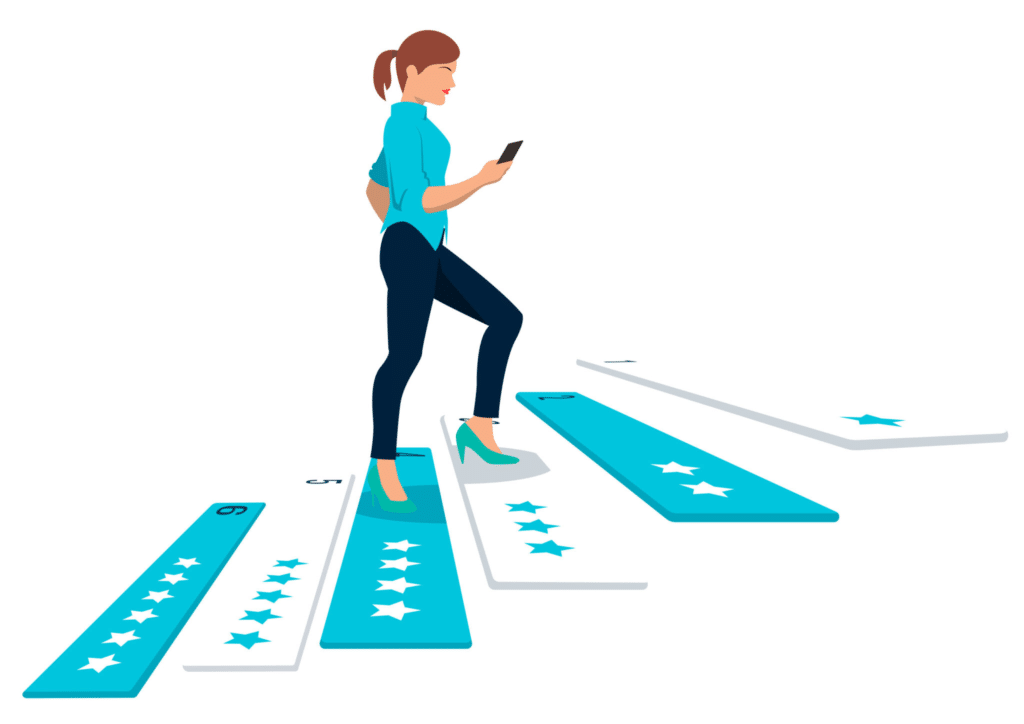
Bite-Sized Learning Content
By 2025, the demand for microlearning—short, focused segments of learning content—will continue to grow. The increasing shift toward on-demand education means that students will need the flexibility to learn in small, digestible chunks, rather than spending hours on traditional lectures or long assignments.
Microlearning fits into students’ increasingly busy lives by delivering concise lessons in the form of videos, infographics, or podcasts. With mobile devices at their disposal, students can engage in short bursts of learning anytime and anywhere, ensuring education is more accessible and adaptable to different lifestyles.
On-Demand Learning Resources
In the workplace, microlearning is already a popular method of delivering training and professional development. By 2025, educational institutions will adopt microlearning for classroom settings, allowing students to access content just-in-time, based on immediate needs or areas of interest. For instance, a student struggling with a particular math concept might quickly access a short video or interactive module to gain clarification.
Blockchain Technology for Academic Credentials and Lifelong Learning
Secure Digital Credentials
Blockchain, the technology behind cryptocurrencies, is poised to revolutionize the way academic credentials are stored and verified. By 2025, blockchain will likely be widely used for issuing and verifying diplomas, certificates, and academic transcripts.
This secure, decentralized technology allows for tamper-proof records that can be instantly verified by employers or other institutions. Students will have digital portfolios that track their educational achievements throughout their careers, making it easier for employers to verify qualifications and certifications without relying on third-party verification services.
Decentralized Learning Platforms
Blockchain could also open the door for more decentralized education models, where learners curate their own educational pathways. Instead of following traditional routes, students may take courses from multiple providers, earning credit for learning experiences across the globe. This could create a more flexible, personalized educational experience that extends beyond the traditional classroom.
Digital Equity: Ensuring Access for All Students
Addressing the Digital Divide
One of the most significant challenges of the future will be ensuring equitable access to the technologies that power education. By 2025, policymakers and educators will prioritize digital equity, working to provide underserved students with the same opportunities to access digital tools and learning resources as their more affluent peers.
Efforts to bridge the digital divide will include providing affordable high-speed internet to rural areas, expanding access to laptops and tablets, and offering online learning options that are compatible with a variety of devices and operating systems.
Assistive Technology for Diverse Learners
Technology will also play a crucial role in supporting learners with disabilities. By 2025, the availability and use of assistive technology in classrooms will continue to expand, making it easier for students with learning challenges to participate fully in educational activities. From text-to-speech software to AI-powered learning assistants, these tools will help level the playing field for Student with disabilities, allowing them to achieve academic success on par with their peers.
Read More :- How Do University Athletics Shape Student Life And Campus Culture?
Conclusion
The trends in educational technology for 2025 highlight the profound ways in which technology is reshaping the classroom. From AI-driven personalized learning to immersive VR experiences, educators and students alike stand to benefit from these advancements. However, it is crucial that we also focus on ensuring equitable access to these technologies for all students, especially those in underserved communities.
As we move toward 2025, these trends offer exciting possibilities for transforming education, making it more engaging, personalized, and accessible than ever before. Educators, policymakers, and technology developers must work together to harness the full potential of these tools and create a future where technology enhances learning for all students.
FAQs
What is the role of Artificial Intelligence in education?
AI plays a critical role in personalizing learning, automating administrative tasks, and providing real-time feedback. AI can assess student performance and adjust learning paths to match individual needs.
How will Virtual and Augmented Reality impact classrooms in 2025?
VR and AR will allow for immersive, interactive learning experiences. Students will be able to engage with 3D models, simulations, and virtual field trips, enhancing their understanding of complex subjects.
What is microlearning, and how does it work?
Microlearning refers to delivering learning content in small, bite-sized units. It caters to short attention spans and offers on-demand, mobile-friendly lessons for better retention.
How will learning analytics help educators?
Learning analytics will provide educators with insights into student performance and progress, allowing for targeted interventions and personalized support.
What are the benefits of gamification in education?
Gamification motivates students by making learning more interactive and rewarding. It uses game mechanics like points, badges, and leaderboards to increase student engagement and persistence.
Will blockchain technology become mainstream in education by 2025?
Yes, blockchain will likely become more widespread for securing academic credentials, offering transparent and verifiable digital transcripts.
What is the future of digital equity in education?
Ensuring all students have access to digital tools and resources will be a priority. This includes addressing issues of internet connectivity and providing assistive technologies for students with disabilities.


